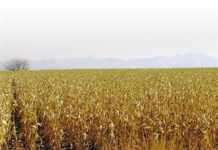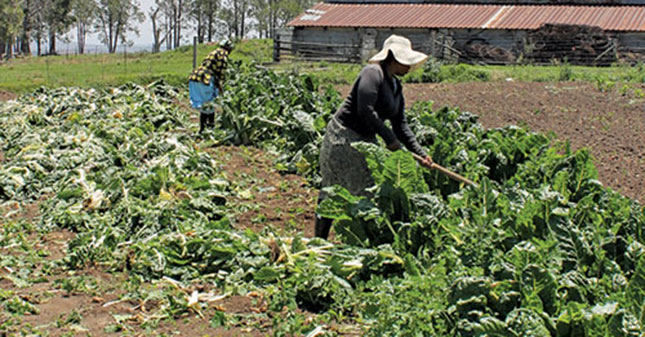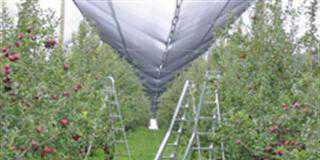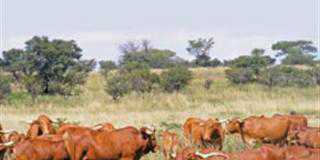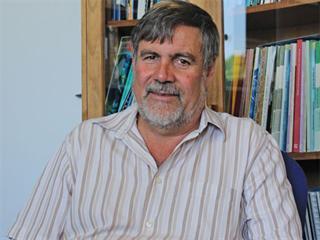
The Intergovernmental Panel on Climate Change (IPCC) released the first section of the fifth Assessment Report (AR5) in October. Tell us more about this.
The AR5 provides a firm basis for making projections on climate change in the 21st century. The projections are based on 39 different climate models, all tested for their ability to reproduce current and past climates, as well as the climate change already observed.
The AR5 contains a number of scenarios for climate change. What is the ‘business as usual’ scenario?
The rate of global, mean air temperature increase, was close to zero in 1950, but at present it is about 0,03°C/ year. If human activities continue to emit greenhouse gases at the steadily increasing pace witnessed during the past 50 years, the rate of warming will increase to 0,06°C/year by 2050. It will then continue at this rate for the rest of the century. This is known as the ‘business as usual’ scenario or RCP8. Representative Concentration Pathways (RCPs) are four greenhouse gas concentration trajectories adopted by the IPCC for its AR5.
What happens under the RCP4.5 and RCP6 scenarios?
If the governments of the world agree to limit greenhouse gas emissions to about their current levels, then gradually reduce them after 2030, the rate of warming stays at about 0,04°C/year until 2050, before falling to zero by the end of the century (RCP4.5 and RCP6). Such a world would be on average about 3°C warmer than the present one, and would stay that way for a long time.
And under the RCP2.6 scenario?
If governments meet their goal of keeping the overall warming of the earth at less than 2°C above the pre-industrial average climate, they would need to start right away with steep greenhouse gas curbs. In this scenario, the rate of temperature increase would drop gradually, reaching zero by 2050 (RCP2.6), but the temperature would still rise before stabilising at about 2°C above the present level, give or take some uncertainty.
What is the global forecast for temperature change?
The world has already experienced a mean temperature increase of 0,8°C since climate measurements began about a century ago. By 2030, this will reach about 1,8°C under all the scenarios mentioned, since there is so much momentum built into both the climate system and the activities causing the change. This includes a 30% contribution from the agricultural sector. From 2030 to 2050, the effects of the different climate change scenarios will begin to be felt. By 2081 to 2100, under RCP8, the global mean temperature rise will be 2,6°C to 4,8°C. Under RCP6 it would be 1,4°C to 3,1°C higher, while under RCP2.6 it would be 0,3°C to 2,6°C higher.
What is happening to temperatures closer to home?
During the past century, the mean temperature in southern Africa has risen at about twice the rate of the global average, and this trend is expected to continue in the future, since it is determined by the continental, subtropical nature of our climate. Thus, for South Africa, under the worst-case scenario where no strong action is taken, the mean air temperature will be 5°C to 10°C above the current temperature. This would be disastrous for agriculture, water supplies, and human and livestock health. Under all scenarios, the mean temperature is expected to be about 2°C warmer than present by 2030.
What will happen if decisive steps are taken to mitigate climate change?
In the unlikely scenario that decisive climate change mitigation action is taken right away, the air temperature will stay at the 2030 level for the rest of the century. In the much more likely ‘some action, but too little and too late’ scenario, SA temperatures will rise unsteadily to between 3°C and 6°C warmer than present by the end of the century. This will make some forms of agriculture impossible in their current locations, and pose severe difficulties for others.
What do the rainfall models tell us?
Most climate models suggest a future pattern of drying on the western side of Southern Africa, and ‘wetting’ on the eastern side. However, the exact location of the transition from the one tendency to the other varies between models. Unfortunately, the area of greatest uncertainty encompasses some of our major crop-growing areas on the highveld of the Free State and Mpumalanga.
What role does evaporation play?
Evaporation will increase as temperatures go up. If the rainfall remains the same, the soil will be drier and there will be less water in the rivers. If the rainfall goes up by about 15%, as is projected for the areas in the extreme east, we break even. If rainfall decreases by a similar percentage and temperatures go up, as is projected for the west, conditions get much drier, with strongly negative effects on grazing. There will be less impact on crops, however, as the western areas are already too dry for cropping, except under irrigation.
How does agriculture affect climate change?
A third of greenhouse gas emissions come from agriculture. We have heard other industries being blamed but not agriculture. But as farmers try to push production higher, they tend to over-fertilise. This means that very high levels of nitrous oxide are produced, which is a powerful greenhouse gas. But in Africa there hasn’t been a great impact yet, because fertilisation is not that high. Our levels are at least 10 times lower than in the USA, for example.
This is because fertiliser is still very expensive in SA and other parts of Africa. However, it is a problem that needs to be managed because as we try and intensify food production to meet the global food demand and address food security problems, we will be confronted by this situation. Our top farmers are trying to get to about 15t/ha. Again, as the demand for animal protein soars, we start to see large-scale feedlotting occurring, which produces methane.
But who informs the farmers?
Farmers are largely informed by fertiliser companies, which also undertake soil analysis. So it is in these companies’ interest to advise farmers to increase fertiliser inputs, to avoid risks. But SA farmers are not stupid. They know that fertiliser is expensive, so they’ll try to optimise production with less application. For farmers to really start behaving the way we’d like them to, they’d need to be rewarded for the part they play. For the moment, when a river gets polluted, for example, there’s no cost to the farmer. But if there were some kind of incentive to reduce pollution, they’d behave differently.
Does this mean organic farming would be a solution?
I’m not against organic agriculture, but it’s not a solution. The very best organic farmers achieve only about three quarters of the total yield of the average conventional farmer. If we all converted to organic production tomorrow, half the world’s population would starve. Just because you’re not applying conventional fertiliser, and only applying organic fertiliser, doesn’t mean that you don’t create exactly the same phenomenon. For instance, the amount of nitrogen leaking from organic farms into rivers and the atmosphere is often greater than that of a conventional farm.
The classical view of organic farming is often narrow and defines its objectives in quite limited terms. It doesn’t necessarily look at other issues such as climate change, which was not around when organic farming started about a century ago. Certain pesticides are also allowed in organic farming, based on the fact that they have been used for 100 years. But some of these, such as copper sulphate, are quite damaging.
There’s a kind of blindness to this whole thing and I’d argue that ideology shouldn’t enter into the equation. We should not be arguing about whether fertiliser is bad and manure is good; we need to look at all the evidence and make use of all the techniques that would work.
What can be done to improve the situation?
One of the things we need to do is get the pricing of agricultural inputs right. In principle, the price of fertiliser obviously has to be affordable for farmers, otherwise they cannot produce the food that we need, but it also must not be artificially cheap. China was so determined to increase food production that fertiliser was hugely subsidised.
Now fertiliser is used in great volumes with all the negative consequences. Another approach is to reward farmers for doing things that benefit society as a whole, beyond farm production. This would include ensuring that biodiversity is not damaged or water from their farms is of good quality. Farmers do many positive things for which they are not rewarded.



